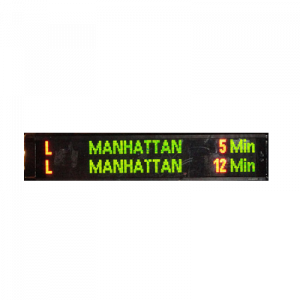[Update: StartClass was offline on April 3, 2018. Its owner, Graphiq, has been aquired by Amazon. I suggest you instead use https://find-mba.com/search which also allows you to filter schools using their average GMAT, work experience and accreditation]
As an admissions and careers consultant, I've advised hundreds of people on how to find the best business school. I've written over over 4,000 posts on this board, and one of the most-read is about GMAT Tiers -- which explains which of the top 100 schools applicants should aiming at. There have been over 80,000 views of that post, which is at http://www.find-mba.com/board/27082
But that post is most useful if your GMAT is over 600. And if you are similar to a lot of other candidates, or bring less additional value to a cohort, then you'll need a higher score.
One of the approaches I recommend for people looking at US schools which accept lower scores is to use comparison databses like Find-MBA's advanced MBA search (https://find-mba.com/search) or startclass (which used to be called FindTheBest). Visit it at http://business-schools.startclass.com/
Consider, for example, the applicant who started this discussion: www.find-mba.com/board/36049 explaining that "I am a Computer Science Engineer with a CGPA of 6.7 intending to do MBA. I have a GMAT score of 560 and a TOEFL score of 97. I currently have a work experience of 2.5 years." CGPA, means Cumulative Grade Point Average, is the ten point scale used in India, so this person is one of the largest groups of applicants: an Indian with a technical education, relatively little work experience with little leadership work, and weak scores. At some Indian universities 6.7 is low: some US schools will think it's like a 2.7 GPA.
Of course, the best advice for this person is to become a better candidate: look for a better role; focus on improving the GMAT score, and especially on the weaker side; do some extra-curricular activity, ideally to get leadership experience and to stand out a little; perhaps take a part-time course somewhere to show the potential to get higher scores in academic work.
However, lots of candidates can't find the time to do that, and a perennial problem for Indian candidates is that they suddenly find they need to start an MBA as quickly as possible because of marriage plans. That means that often they miss out on the opportunity to apply early, which could allow them to get into a better college.
Getting into the best college you can really matters, because the quality of the education, the classmates, the financial aid and the career outcomes vary massively.
Comparison sites are great resources because they list data for around hundreds of schools. Both Find-MBA and Startclass include the 300 best schools in the US and, as far as I can see, Startclass only lists the good ones: those which are AACSB accredited. They are ranked using different methods: Startclass uses a Smart Rank system which averages the rankings over the last few years, and that's as good an approach as any. I'm not sure how Find-MBA ranks their results.
Imagine for example a candidate with a 560. There's a slider bar in either site allows you to reduce the average GMAT to 560, and that shows that the schools with an average at or under 560. You can then see those schools ranked and filter them for other variables (perhaps for schools with similar or less average work experience). Using Startclass in 2013, that showed that the top schools were Utah, Rutgers, DePaul, Flint and Portland.
If we then click through, we'll see more data (In startclass, click on "ADVANCED TABLE" on the top right above the table). The average work experience varies a lot a these schools. Our candidate would be weaker at the first three schools, where the work experience is around 5 years, but stronger at Flint and Portland. They could be considered stretch schools, because admission is possible there but not assured.
Because this candidate is weak on more points that just work experience, we probably need to look for schools where his GMAT is above the average, to balance for the fact that neither the nationality, profession or work experience are in short supply or highly valued. So, if we look at schools where the average is 530, we get Portland, Ball State, Drake, Central Michigan and Montana State. These would be safe schools if this candidate can apply early, because there's only so many seats available for Indian computer scientists: if you apply later, they will have filled up their quota of Indians.
And id the candidate is applying late? Maybe they need to look even lower down, like 510? The top five are Portland and Drake (again), McNeese, Kansas and UMass Dartmouth. Those should be pretty safe schools unless the candidate is very weak in some other ways.
So, that's the good news about StartClass and Find-MBA. However, there are some weaknesses. The data are not always consistent with what the schools publish, and often that's because schools publish different numbers all the time. Sometimes sites have old data. There's a feature in Startclass that allows readers to suggest updates to the data (I know Find-MBA is also responsive by email), but perhaps some errors come in that way too. So, you also need to do your own research to confirm what any site is suggesting. Even so, it's a huge time-saver.
There's one last thing I should say about these sites' ranking systems. Averaging the rankings is really smart, but the reality is that as you go lower down the rankings the differences don't mean so much. The gap between 1st place and 50th place will be huge, but the difference between 151st and 200th is not so big.For that reason also keep an eye out for salary data. If you're looking very low down the ranking, salaries and selectivity are key data. A school with a high salary and which selects only a small percentage of applicants will be very good.
Those other data should also give you hints about schools where the GMAT might be wrongly shown. For example, can Portland really have an average GMAT of 500, as Startclass has claimed? It seems a bit odd that it's outperforming schools with average scores of 570... I see that BusinessWeek says it has an average of 540 (http://www.businessweek.com/bschools/rankings/full_time_mba_profiles/portland.html) and that fits with Princeton Review which gives the standard range of 470-580 (http://www.princetonreview.com/schools/business/BizBasics.aspx?iid=1036178). So, please use those two sites to check and update what you get.
Despite the weaknesses, the usability of comparison sites makes them a very useful tools for applicants looking underneath the FT top 100.
[Edited by Duncan on Apr 04, 2018]
-567a7.jpeg)
-(1)-94485.jpeg)


